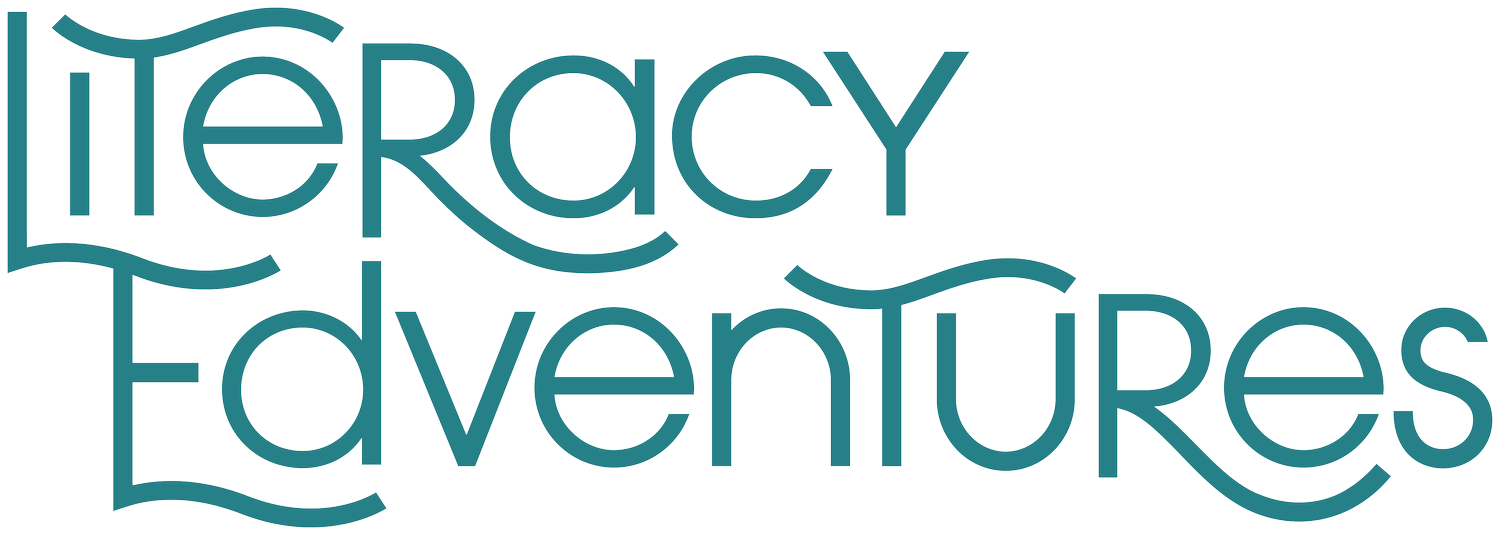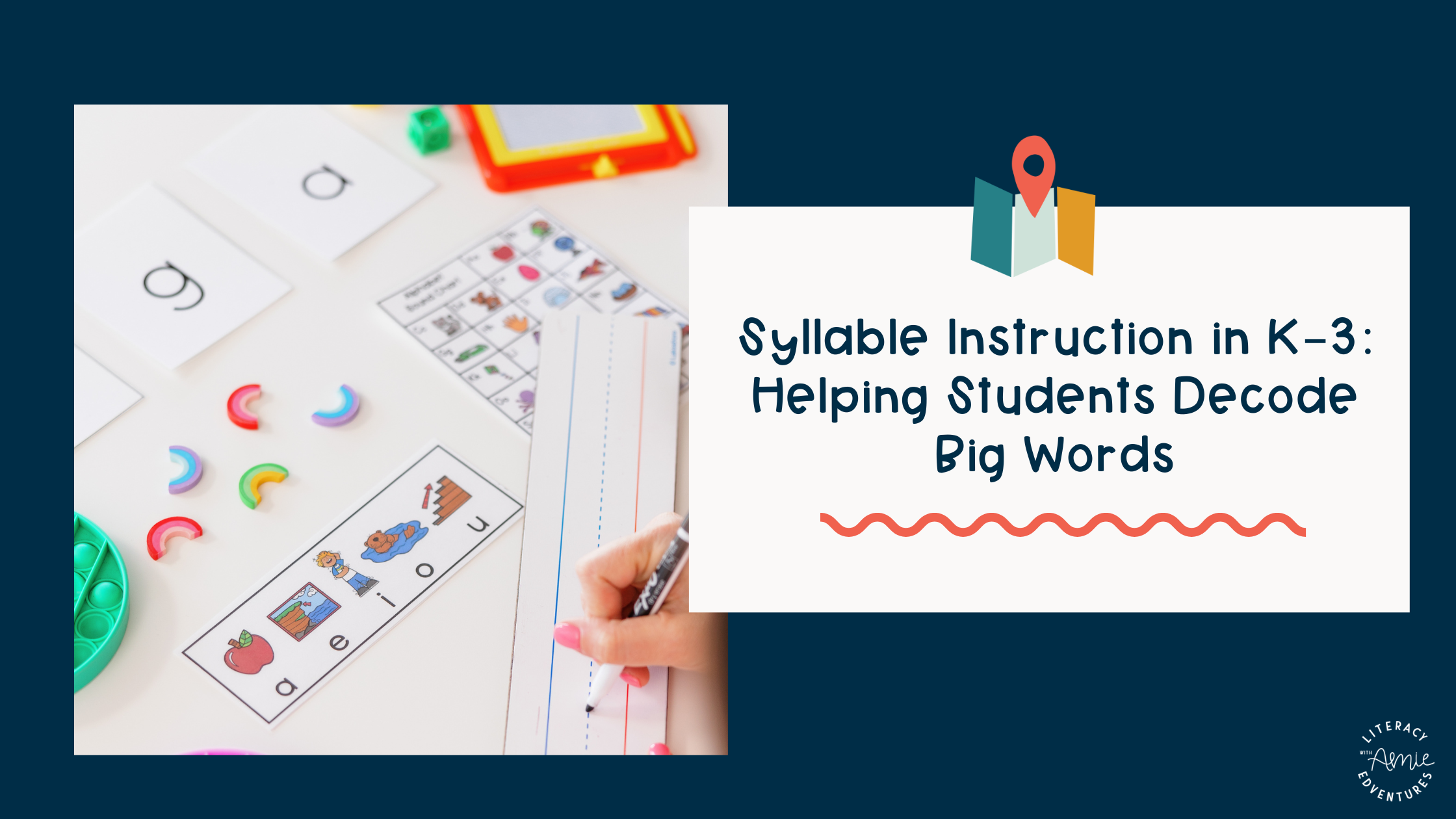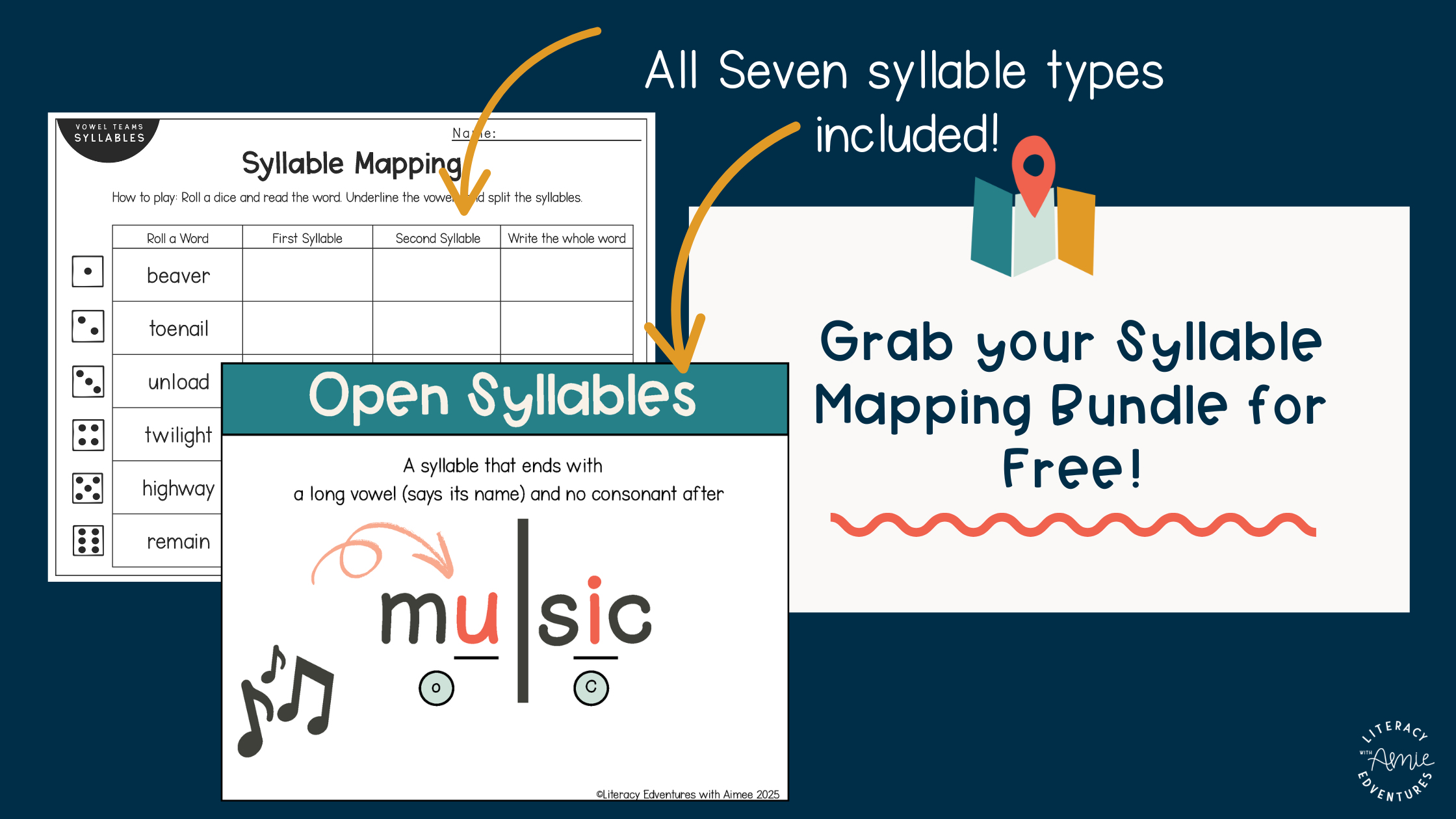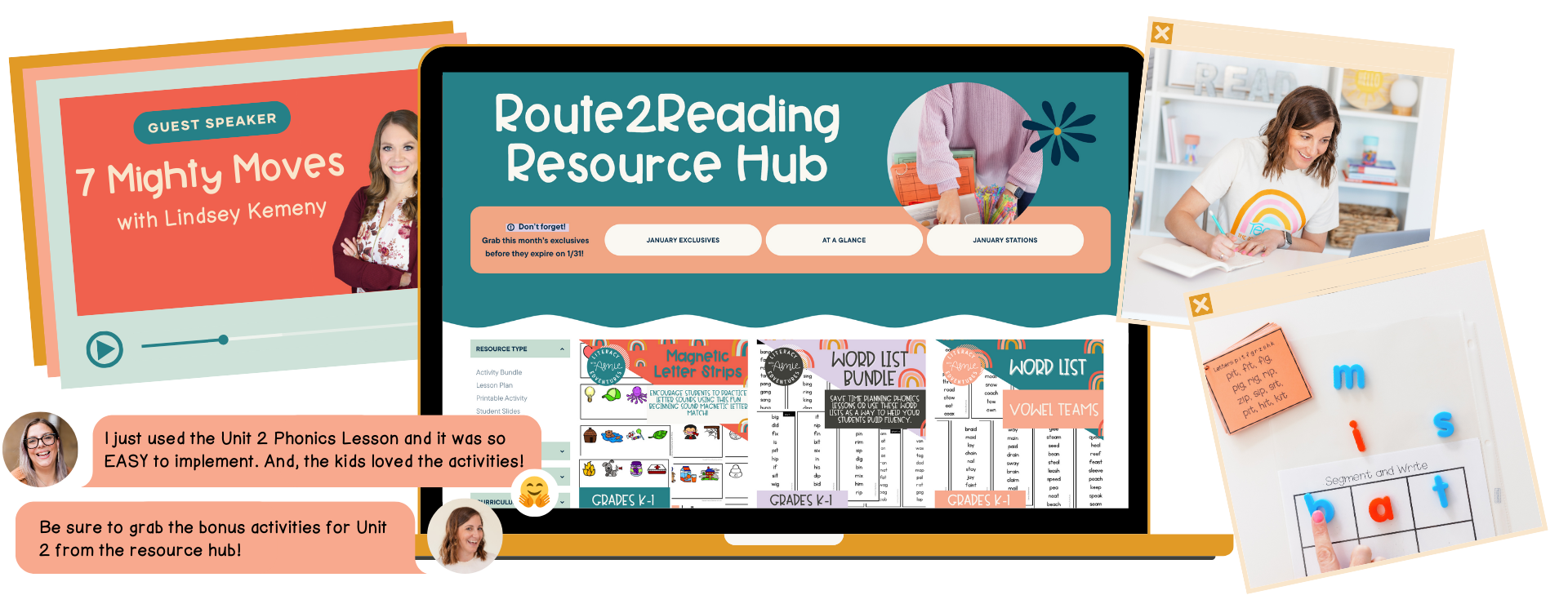Teaching Syllable Types: How to Help K–3 Students Read Big Words
Have you ever heard one of your students say, “I can’t read big words!” or “Those words are TOO LONG for me!”
If so, you’re not alone. Many early readers feel overwhelmed by multisyllabic words. But here’s the good news: with explicit syllable instruction, you can give students the tools they need to break down longer words and read them with confidence.
This post is Part 1 of a two-part series on syllable instruction. Today, we’re focusing on the what—what syllables are, why they matter, and the six syllable types every child should know.
In Part 2, we’ll dive into the how—specific strategies, routines, and classroom activities that make teaching syllable types practical and engaging for your K–3 readers.
Why Syllable Instruction Matters in K–3
For many beginning readers, just the length of a word can trigger frustration. They may guess, skip, or shut down altogether. You’ve probably seen it at your small group table—the hesitation, the side-eyes, the tension.
When we explicitly teach syllable types, students learn how to break big words into smaller, manageable parts. This strategy not only boosts decoding accuracy, but it also builds fluency and confidence. Teaching syllable types gives kids a lifelong decoding tool they can use any time they encounter an unfamiliar word.
What Are Syllables?
A syllable is a single unit of pronunciation with one vowel sound. Every word has at least one syllable. For early readers, learning how to identify and divide syllables provides a concrete, step-by-step way to tackle unknown words.
The Six Syllable Types Every Child Should Know
Explicitly teaching the six syllable types helps students see patterns and apply consistent strategies when reading. Here’s a teacher-friendly breakdown:
1. Closed Syllable (CVC)
Pattern: Ends in a consonant; vowel is short.
Examples: cat, rabbit, basket
Tip for Kids: “If it’s closed in, the vowel is short.”
2. Open Syllable
Pattern: Ends in a vowel; vowel is long.
Examples: go, robot, tiger
Tip for Kids: “If it’s open, the vowel says its name.”
3. Vowel-Consonant-e (Magic e)
Pattern: Vowel + consonant + e; first vowel is long, e is silent.
Examples: cake, hope, kite
Tip for Kids: “Magic e makes the vowel say its name.”
4. Vowel Team
Pattern: Two vowels together that make one sound.
Examples: team, rain, boat
Tip for Kids: “When two vowels go walking, the first one does the talking.”
5. R-Controlled
Pattern: Vowel followed by “r” changes the sound.
Examples: car, bird, turn
Tip for Kids: “The bossy r changes the vowel sound.”
6. Consonant-le
Pattern: Word ends in consonant + le.
Examples: table, little, puzzle
Tip for Kids: “Count back three and divide.”
How to Teach Syllable Division in the Classroom
When introducing syllable instruction in grades K–3:
Start with Closed and Open syllables before layering on more complex types.
Use hands-on activities like word sorts, dice games, and syllable mapping.
Provide decodable passages that match the target syllable type.
Encourage students to apply syllable division strategies whenever they encounter unfamiliar words.
Why Teaching Syllable Types Builds Strong Readers
Syllable instruction is more than just a decoding trick—it unlocks meaning, supports fluency, and builds confidence. Instead of feeling overwhelmed by “big words,” students feel empowered with a system they can rely on.
When you weave syllable type instruction intentionally into your phonics scope and sequence, you’re giving students a strategy they’ll use for the rest of their reading lives.
And remember—this is just the beginning. Understanding what syllables are and the six types provides the foundation.
In Part 2 of this series, we’ll explore the how: step-by-step teaching routines, syllable division strategies, and fun activities that help students confidently tackle multisyllabic words.
Wish you had a literacy coach and resources in your back pocket?
I understand that buying each resource separately can quickly ADD UP. As a teacher, I know we have to make the money we spend COUNT! But don’t worry—there’s a more straightforward, more efficient solution with Route2Reading, my K-2 membership designed to streamline planning, prepping, and teaching small group instruction. Rather than spending your weekends glued to your computer, searching for Science of Reading-aligned phonemic awareness, phonics lessons, and decodable texts for your small groups, you can log in to Route2Reading. Choose the focus skill for the week, download the detailed, step-by-step lesson plans and activities, and your small group instruction is ready to go in just a few clicks. Planning has never been easier!
I hope that you found today’s post helpful. Whether you choose to join the membership or not, I am always here to help you in any way that I can. Leave your questions below or send me an email Amie@literacyedventures.com





